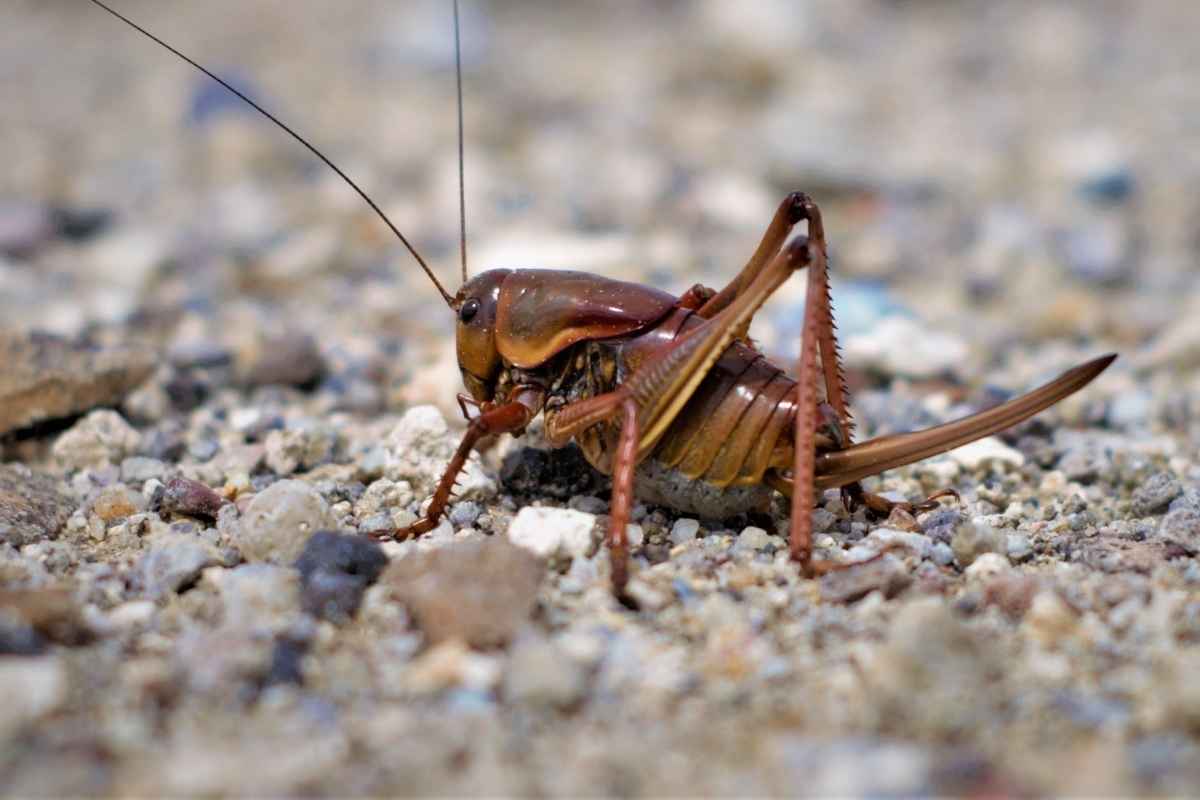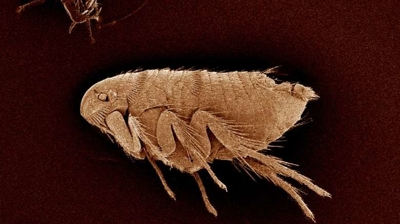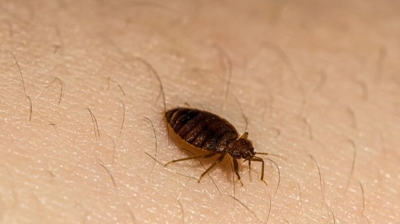
Mormon Cricket Control Services

Are Mormon Crickets Harmful?
Mormon crickets, despite the misleading name (they are actually a type of katydid rather than true crickets), can be considered harmful in several ways:
- Physical Hazards: Mormon crickets can congregate in massive swarms along roadsides. Crushed insects can make roads slippery, increasing the risk of vehicle accidents. Swarms can attract large numbers of birds and other predators, which might disrupt local ecosystems or spread diseases among animals.
- Human Nuisance: While they do not directly bite or sting humans, they can invade homes and buildings in search of food or shelter, creating a mess and potential damage to ornamental plants. Large numbers of crickets can harass livestock, eating supplemental feed or even nibbling on animals in extreme cases.
- Agricultural Damage: Mormon crickets are highly voracious feeders that consume a wide variety of crops, including grains, alfalfa, vegetables, and pasture grasses. Large swarms can strip fields bare, causing significant economic loss. They often eat young seedlings, leaves, and stems, which can stunt plant growth or kill plants outright. This is especially destructive in early growing seasons.
- Environmental Impact: In natural ecosystems, large swarms can consume grasses and shrubs extensively, leading to soil erosion and reduced habitat quality for other wildlife. They can consume forage that livestock rely on, indirectly affecting ranching operations.
In short, Mormon crickets are considered harmful primarily due to their ability to form enormous swarms that devastate crops and natural vegetation, create hazards for humans and animals, and generate significant economic costs.
Learn more: Do Mormon Crickets Bite?
Mormon Cricket Control
Hiring our professional pest control for Mormon crickets is highly recommended because these insects can become serious agricultural and structural pests if not managed properly. Here’s why our professionals are the best choice:
- Expert Identification and Assessment: Mormon crickets are often confused with grasshoppers. Our pest control professionals can accurately identify the species, determine the size and extent of the infestation, and evaluate potential risks to crops, gardens, and property.
- Targeted Treatment Plans: Mormon crickets often occur in large swarms and can migrate across large areas. Our professionals design tailored control strategies, which may include targeted insecticides, baits, or habitat management. This ensures treatments are effective while minimizing environmental impact.
- Safe Application of Chemicals: Many insecticides used for Mormon crickets are potent and require precise application to avoid harm to humans, pets, wildlife, and beneficial insects. Our trained technicians know the correct dosages, timing, and methods to maximize safety and effectiveness.
- Long-Term Prevention: Our professionals don’t just eliminate the immediate problem—we also provide guidance on reducing future infestations. This may include landscape modification, removal of egg-laying sites, and monitoring programs to catch problems before they escalate.
- Efficiency in Large-Scale Infestations: Mormon crickets can travel in large swarms, sometimes numbering in the thousands. Containing such populations is labor-intensive and often impractical for homeowners or farmers to handle alone. Our professional teams have the equipment and resources to treat infestations efficiently.
- Minimizing Crop and Property Damage: These crickets feed on a wide variety of plants, including grasses, grains, and garden crops. Our prompt and professional management can help mitigate significant economic losses by protecting plants and stored food supplies.
- Expert Monitoring and Follow-Up: Our professional services include ongoing protective visits and monitoring to ensure treatments have worked and that crickets don’t return in large numbers. This ongoing support can save money and frustration compared to repeated DIY attempts.
Hiring our professional pest control for Mormon crickets ensures accurate identification, safe and effective treatment, long-term prevention, and protection of crops, property, and the environment. Attempting to handle a swarm on your own can be inefficient, unsafe, and ultimately less effective.
Learn more: How To Get Rid Of Mormon Crickets
What Do Mormon Crickets Look Like?
Mormon crickets (Anabrus simplex) are large insects with distinctive physical characteristics. Here is a detailed description of their appearance:
- Size: Adult female Mormon crickets are typically larger than males, measuring between 2 to 3 inches (5 to 7.5 centimeters) in length. Males are somewhat smaller, but both genders are robust in build.
- Body Shape: These insects have a robust and elongated body with a cylindrical shape. Their bodies are covered in a tough exoskeleton.
- Color: Mormon crickets typically have brown or black exoskeletons. The exact coloration can vary, but they often have a mottled or striped appearance. Their coloration helps them blend into their arid and semi-arid habitats.
- Head: They have a well-developed head with a pair of large compound eyes. Their antennae are long and slender, extending forward from the head.
- Legs: Mormon crickets have six legs, like all insects, with the hind legs being particularly strong and adapted for jumping. These powerful hind legs allow them to leap significant distances.
- Wings: While they have wings, Mormon crickets are flightless and are unable to fly. Their wings are relatively short and are not functional for powered flight.
- Stripes and Bands: One of their distinguishing features is the presence of stripes or bands along their body, which can be seen as they crawl or hop. These stripes often vary in color and intensity but contribute to their overall appearance.
- Sexual Dimorphism: As mentioned earlier, female Mormon crickets are larger than males, and their differences in size and shape are noticeable upon close inspection.
While they are called "crickets," Mormon crickets are not true crickets but belong to the katydid family (Tettigoniidae). They lack the typical chirping sound associated with true crickets. Their unique appearance and swarming behavior make them distinct within the insect world, and they are particularly notable in their native habitats in the western United States and parts of Canada.
Where Are Mormon Crickets Found?
Mormon crickets (Anabrus simplex) are primarily found in the western United States and parts of Canada, particularly in arid and semi-arid regions. Here are some specific areas and habitats where you might encounter Mormon crickets:
- Western United States: These insects are most commonly found in states such as Idaho, Nevada, Utah, Oregon, Wyoming, and parts of California. They inhabit a variety of landscapes, including grasslands, sagebrush, and desert regions.
- Great Basin: The Great Basin region, which includes parts of Nevada, Utah, Idaho, and Oregon, is a known habitat for Mormon crickets. The dry and arid conditions in this area are suitable for their survival.
- Mountainous Regions: In some cases, you may also find Mormon crickets in higher elevation mountainous areas within their range, as long as the environmental conditions are suitable.
- Agricultural Areas: Mormon crickets can sometimes pose a significant threat to agricultural areas, as they are known to feed on crops and vegetation. Therefore, you may encounter them in or near agricultural fields when they are present in large numbers.
- Roadsides: During their migrations or swarming events, Mormon crickets may cross roads and highways, making them more visible to travelers.
- Desert Regions: While they are not exclusive to desert regions, Mormon crickets are adapted to arid environments, and you may find them in desert habitats, particularly if there is suitable vegetation for them to feed on.
Mormon crickets are not always present in large numbers, and their populations can vary from year to year depending on environmental conditions. When they do form swarms or migrate, they become more noticeable due to their sheer numbers and the damage they can cause to crops and vegetation. If you are specifically interested in observing or studying Mormon crickets, you may want to consult local entomology experts or research institutions in the regions where they are known to be present for more precise information on their current distribution and behavior.
What Do Mormon Crickets Eat?
Mormon crickets (Anabrus simplex) are omnivorous insects with a varied diet. Their feeding habits can change based on food availability and environmental conditions. Here is a comprehensive overview of what Mormon crickets eat:
- Plant Material: Mormon crickets primarily feed on grasses, including both native grasses and cultivated crops. They can consume the leaves, stems, and seeds of grass plants. They also feed on forbs, which are herbaceous flowering plants that are not grasses. Forbs can include a wide variety of plant species. In general, they graze on various types of vegetation, which can include shrubs and other plants found in their habitat.
- Carrion and Insects: While primarily herbivorous, Mormon crickets can also scavenge carrion, such as the remains of dead animals. They are opportunistic feeders and may consume dead insects or other small animal matter if it's available.
- Cannibalism: In situations where food is scarce or when population densities are high, Mormon crickets have been known to engage in cannibalism. They may eat other injured or dead crickets, including individuals of their own species.
- Agricultural Crops: When Mormon cricket populations become particularly large, they can pose a significant threat to agricultural crops. They are known to feed on various crop plants, including grains, vegetables, and forage crops, which can lead to crop damage and economic losses for farmers.
- Plants in Their Habitat: They often consume the vegetation in their native habitats, which are typically arid and semi-arid regions. Their diet includes the plants available in these environments.
- Scavenging During Swarming Events: During swarming events, when Mormon crickets form large marching bands or swarms, they can strip the vegetation in their path as they move. This behavior can result in extensive damage to crops and natural vegetation.
The diet of Mormon crickets can vary based on factors such as food availability, environmental conditions, and the life stage of the insects. While they are primarily herbivorous, their opportunistic feeding behavior and adaptability to different food sources make them versatile feeders. In certain situations, their feeding habits can make them a significant agricultural pest, leading to efforts to control their populations when necessary.
Mormon Cricket Life Cycle
The life cycle of Mormon crickets (Anabrus simplex) consists of several distinct stages, from egg to nymph to adult. Here is a comprehensive overview of their life cycle:
- Egg Stage: The life cycle begins with the laying of eggs, typically in late summer or early fall. Female Mormon crickets deposit their eggs into the soil, often burying them at a shallow depth. The eggs remain dormant throughout the winter and early spring months, undergoing diapause, a state of suspended development.
- Nymph Stage: In the spring, as temperatures rise and environmental conditions become more favorable, the eggs hatch. The newly hatched insects are known as nymphs and closely resemble miniature versions of the adult crickets. They have a similar body shape but lack fully developed wings and reproductive organs. Nymphs go through a series of molts as they grow. During each molt, they shed their exoskeleton, revealing a larger and more developed exoskeleton underneath. Over the course of several weeks to a few months, depending on environmental conditions and food availability, the nymphs mature through several instars (stages between molts).
- Adult Stage: Once the nymphs have undergone several molts and reached full maturity, they enter the adult stage. Adult Mormon crickets have fully developed wings, although they are flightless and unable to fly. Their wings are relatively short compared to their body size. At this stage, they are capable of reproducing, and the primary focus of adult crickets is mating and laying eggs. During the summer months, adult female Mormon crickets lay eggs in the soil. The process of egg-laying may continue for several weeks. Mating occurs, often in the vicinity of the egg-laying sites. Male crickets produce sounds and engage in courtship behavior to attract females. The adult stage of Mormon crickets is relatively short-lived, typically lasting only a few weeks to a few months. After mating and egg-laying, many adult crickets die, especially if they have expended significant energy during the reproductive process.
This life cycle is adapted to the seasonal variations in their arid and semi-arid habitats. The eggs provide a way for the species to survive harsh winter conditions, and the emergence of nymphs in the spring allows them to take advantage of the warmer and more hospitable weather for growth and development. Swarms of Mormon crickets often occur when environmental conditions are favorable, leading to large populations that can become agricultural pests in certain regions.

Hear From Our Happy Customers
-
"Exceeds Expectations"
I can’t say enough positive things about this company... The tech that came out, Jarvis went above and beyond my expectations. Thank you guys, I will continue using your services.
- Jake M. -
"Great Communication"
Tech was on time, communication was great, and he accommodated my needs.
- Alonzo W. -
"Fantastic & Patient"
Jarvis was fantastic and patient. He answered my questions with an in-depth explanation and addressed all of my areas of concern. Would love for him to be my assigned tech going forward. Well done!
- Yonnette M. -
"Professional & Considerate"
I’m pleased with Miche services. Jarvis came today. Professional and considerate. Thank you!
- Judy B. -
"Wonderful Service"
Wonderful service. Jarvis is great. Took care of everything I needed. Thank you!
- Henry P. -
"Very Knowledgeable"
The tech that arrived was courteous, professional, and very knowledgeable. He was Great.
- Uerial I.



